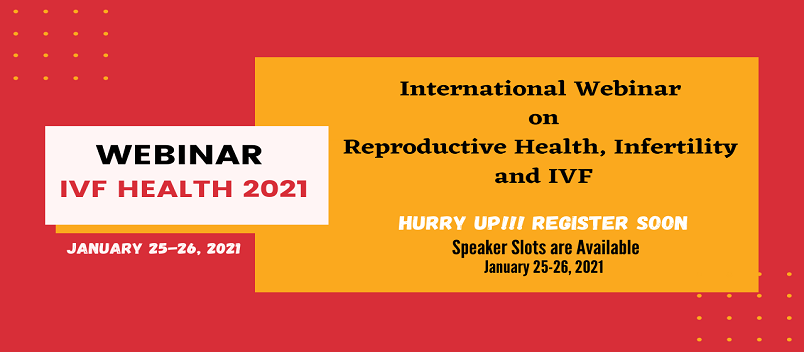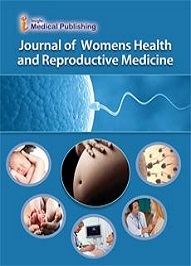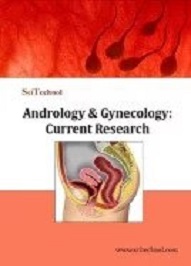Theme: Global Impact on Infertility and IVF during Covid-19 Pandemic
IVF Health 2021
Conference Series llc LTD takes immense Pleasure to welcome participants from all over the world to attend the "2nd International Conference on Reproductive Health, Infertility and IVF” (IVF Health 2021) Webinar during August 23-24, 2021. The conference program focuses on “Global Impact on Infertility and IVF during Covid-19 Pandemic” which will excite young minds in searching for a novel approach towards the wonder of a sustainable future.
IVF Health 2021 Webinar will focus on educational research directed toward its impact on clinical outcomes, through Keynote and oral presentations, and influential plenary presentations on the field of Reproductive health, Infertility and IVF.
IVF Health 2021 Webinar aims to unite a great number of participants through online which include worldwide Specialists, Researchers, Nurses, gynaecologists, Infertility specialist, Endocrinologists, IVF specialist, Embryologist, Exhibitors, Investigators and Professors from all over the globe to deliver a speech and discuss the recent importance and the future guidelines on connected session. It deals with the importance of Reproductive health and issues related to it and includes a detailed understanding of Reproductive health and Medicine, Fertility and Infertility, Female and Male Reproductive cancers, IVF Treatment, Embryo transfer, Risks associated with in vitro fertilization, Sexually transmitted diseases, and many more.
Target Audience
- Obstetrics and Gynecologists
- Specialists in IVF
- IVF Centers
- IVF Associations and Societies
- Gynecological Pathologists
- Gynecological Oncologists
- Directors of Maternity Hospitals
- Reproductive Endocrinologists
- Infertility specialists
- Heads of the Obstetrics & Gynecology Departments
- Nursing scholars
- Psychologists
- Students of Medicine Disciplines
- Upcoming Researcher
- Pharmacists
- Anesthesiologist
- Family Medicine Physicians and General practitioners
- Pharmacologists
- Health care systems and Hospitals
- Clinical Toxicologists
- Societies of Andrology and Gynecology
- Obstetrics Community
- Health Care Professionals
- Ultra Sound Specialists
- Clinical embryology
- Infertility and IVF Units
- Internists
- Reproductive Medicine Specialists
- Reproductive Immunologists
- Embryologist
Market Analysis
Global Infertility Market
In 2010, worldwide population accounted around 6.15bn of which 49.7% was women. A similar pattern is relied upon to be existing by 2025. By 2025, the total population is determined to be 8.19bn of which 49.5% will be women. One in every four couples in developing countries had been found to be affected by infertility. Nevertheless, research has shown consistently that secondary infertility, which refers to women who have had at least one pregnancy and live birth previously, is more common than primary fertility, which refers to women without a biological child.
According to a systematic analysis of international health surveys, in 2010, approximately 10.5% of women around the world experienced secondary infertility, and roughly 2% experienced primary infertility. The prevalence of secondary infertility, in particular, varies widely by region and country, ranging from less than 6% to greater than 16% of women. The majority of researchers agree that infectious disease, which can lead to fallopian tube blockage, contributes largely to variation among populations and changes over time. Since infertility risk tends to increase with age, differences and changes in the age at childbearing likely play a role. This determined figure clarifies the development capability of the different types of women’s infertility percentage till 2025.

IVF Success Rate
Rise in global infertility rates, delayed pregnancies, increase in gamete donations, and rise in IVF success rate are expected to propel the growth of the global IVF services market. The clinical research institutes segment is projected to portray the fastest CAGR of 10.4% through 2025. The Asia Pacific region is expected to register the fastest CAGR of 12.6% during the forecast period. Increasing number of IVF treatments has encouraged more insurance providers to cover these procedures. The world IVF market accounted for $9,015 million in 2015 and is projected to garner revenues worth $17,714 million by 2022, registering a CAGR of 10.2% over the forecast period.
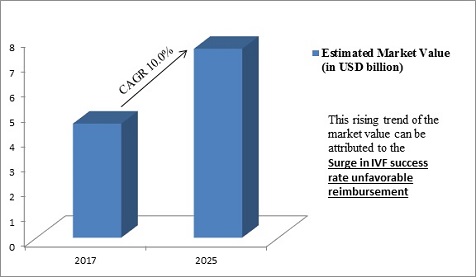
The growth of the market is attributed to the reduced conceiving rates, delayed pregnancy, changing lifestyle conditions and fertility disorders are the major factors that drive the market growth. Other factors such as favourable reimbursement scenario and delayed parenthood opted by couples due to professional and financial constraints will also help in the growth of the market. On the other hand, barriers such as ethical concerns in particular countries with respect to IVF, high cost of the IVF procedures followed by low awareness, especially in under-developed economies such as Nigeria are likely to restrain the market growth.
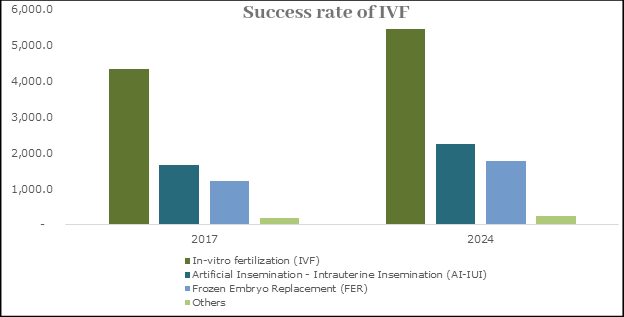
Why Japan?
Kyoto is former capital of Japan and for more than a thousand years the centre of traditional Japanese culture and is still considered the Heart and Soul of traditional Japan. Kyoto has the highest percentage of academics per capita in Japan with over 40 universities and 50 research organizations. Most of Japan's Nobel Prizes have been awarded to researchers from Kyoto University.
It is considered as an eminent place for Health & Education. The Japan conferences play a crucial role in the promotion of scientific data and ideas around the world. There are also associations that work in the management of medical care for women and adults. It can be considered as a reasonable means for the migration of important knowledge about research and novel advances throughout the world. Hospitals in the Japans are state of the art and provide high levels of clinical care. Health professionals get the opportunity to work in an exciting, thriving, modern location and a great lifestyle.
Related Associations and Societies
Middle East
- Middle East Fertility Society (MEFS)
- Syrian American Medical Society
- Iranian Scientific Association of Embryology and Reproductive Biology
- Iranian Scientific Association of Endocrinology
- Iranian Scientific Association of Reproductive Medicine
- Turkish Society of Obstetrics and Gynecology
- Turkish Society for Reproductive Medicine
- Turkish Infertility Foundation
- Turkish Medical Association
- Iraqi Society of Obstetrics & Gynecology (ISOG)
- Saudi Society of Obstetrics & Gynecology
- Saudi Obstetrical and Gynaecological Society
- Saudi Gynecology Oncology Group
USA
- American Association of Gynecologic Laparoscopists
- American College of Obstetricians & Gynecologists
- The Association of Physician Assistants in Obstetrics and Gynecology
- Association of Professors of Gynecology and Obstetrics
- Central Association of Obstetricians and Gynecologists
- Gynecologic Cancer Foundation
- Society of Gynecologic Oncologists (SGO)
- International Urogynecological Association (IUGA)
- American Osteopathic Board of Obstetrics and Gynecology
- American Society Reproductive Medicine
- American College of Nurse-Midwives
- National Association of Nurse Practitioners in Women's Health (NPWH)
- Physicians for Reproductive Health
Europe
- The European Society of Contraception and Reproductive Health
- German Foundation for World Population
- European Association of Pediatric and Adolescent Gynecology
- Italian Society for Obstetrics and Gynecology
- European board & college of Obstetrics and Gynecology
- European Society of Gynecological Oncology
- Austrian Society of Sterility, Infertility and Endocrinology
- Croatian Society for Gynecological Endoscopy
- German Society of Gynecological and Obstetrical Endoscopy
- Hungarian Society for Gynecological Endoscopy
- Dutch Society for Gynaecological Endoscopy and Minimally Invasive Surgery
- Romanian Society of Minimally Invasive Surgery in Gynecology
Asia Pacific
- Asia Pacific Pediatric Association
- Brazilian federation of gynecology and obstetrics associations
- The Obstetrical and Gynaecological Society of Hong Kong
- The Indonesian Society of Obstetrics & Gynecology
- Obstetrical and Gynaecological Society of Malaysia
- Obstetrical & Gynaecological Society of Hong Kong OGSHK
- Obstetrical & Gynaecological Society of Singapore
- Indonesian Obstetrics & Gynecology Society
- Philippine Obstetrical & Gynecological Society INC
- Russian Society Obstetricians Gynaecologists
- Asia Pacific Council on contraception
Track 1: Reproductive health and Medicine
The reproduction of the species is a fundamental property of all living things. Good sexual and reproductive health is a condition of well-being mentally, physically, and social well-being in all matters relating to the reproductive system and to its functions. Reproductive Medicine is a branch of medicine deals with the diagnosis of reproductive issues which include infertility, sexual education, family planning, and in women, ovulation, menstruation, pregnancy, menopause, and many gynaecological disorders.
Related Conferences: Reproductive Conference | Women Infertility Meetings | Gynaecology Congress
Track 2: Reproductive Endocrinology
Reproductive Endocrinology is a sub-speciality of Obstetrics and Gynaecology who trained physicians to provide fertility treatments using assisted reproductive technologies (ART) such as in-vitro fertilization (IVF) and egg freezing. RE and infertility specialists primarily focus on the treatment of infertility also evaluate and diagnose hormonal dysfunctions in females and males outside infertility.
Related Conferences: Reproductive Conference | Women Infertility Meetings | Gynaecology Congress
Track 3: Gynaecology and Obstetrics
Gynaecology is the branch of physiology and medicine which deals with the functions and diseases specific to women and girls, especially those affecting the reproductive system (uterus, ovaries, vagina, and Mammary gland) and diagnoses cancer of the reproductive organs includes vagina, cervix, uterus, ovaries, and fallopian tubes. Obstetrics specifically deals with the wellness of the pregnant woman and her baby. Gynaecologist may be able to treat some areas of infertility. Most OB/GYNs can prescribe dependable fertility medications like clomiphene citrate (Clomid) to help regulate ovulation.
Related Conferences: Reproductive Conference | Women Infertility Meetings | Gynaecology Congress
Track 4: Fertility & Infertility
Infertility is a term used to describe the inability of a couple to get pregnant or the inability of a woman to carry a pregnancy after 12 months of regular sexual intercourse without the use of birth control. Fertility drugs regulate or stimulate ovulation. Fertility drugs are the main treatment for women who are infertile due to ovulation disorders and it improves fertility. Other women may need several different types of treatment to achieve pregnancy can likewise be treated with ARTs.
Related Conferences: Reproductive Conference | Women Infertility Meetings | Gynaecology Congress
Track 5: Female Infertility
Female Infertility is caused by many sources, including nutrition, diseases, and other malformations of the uterus. Female infertility factors contribute to approximately 50% of all infertility cases, and its alone accounts for approximately one-third of all infertility cases. The most common causes of female infertility include problems with ovulation, damage to fallopian tubes or uterus, or problems with the cervix. It affects an estimated 48 million women, with the highest prevalence of infertility affecting people in South Asia, Sub-Saharan Africa, Middle East, and Central/Eastern Europe and Central Asia.
Related Conferences: Reproductive Conference | Women Infertility Meetings | Gynaecology Congress
Track 6: Male Reproductive Cancers and Infertility
Reproductive cancers in men can be found in the testicles, penis and prostate gland and it causes risk to the male population. Prostate cancer is the most common non skin cancer in the United States, Testicular cancer is the most common solid malignancy affecting men ages 15 to 35, and Penile cancer comprises 20% of cancers in men in Asia, South America and Africa. Reproductive dysfunction and malignancies related to the male reproductive system also deals with a serious health concern.
Related Conferences: Reproductive Conference | Women Infertility Meetings | Gynaecology Congress
Track 7: Endometriosis and Infertility
Endometriosis is a painful disorder in which tissue that normally lines the inside of the uterus and the endometrium grows outside the uterus. Endometriosis is usually found in the lower abdomen or pelvis, ovaries, fallopian tubes, and tissue around the uterus and ovaries; however, in rare cases it may also occur in other parts of the body. The main symptoms are lower abdominal pain, pain with periods, pelvic pain and infertility. About 30% to 40% of women with endometriosis have some trouble conceiving and infertility is common with stage IV endometriosis. Several different treatment options can help manage the symptoms and improve the chances of getting pregnant.
Related Conferences: Reproductive Conference | Women Infertility Meetings | Gynaecology Congress
Track 8: Polycystic Ovary Syndrome
Polycystic ovary syndrome is a hormonal disorder that affects millions of women of reproductive age. The hormones that play a role in women with PCOS produce more amounts of male hormones which are called Androgen and decrease in secretion of Progesterone and Insulin hormone. PCOS contribute to long-term health problems like heart disease and diabetes. It is the most frequently occurring endocrine disorder among women between the ages of 18 and 44. About 2% to 20% of this age group is affected by this. It is considered one of the main causes of poor fertility.
Related Conferences: Reproductive Conference | Women Infertility Meetings | Gynaecology Congress
Track 9: Sexually Transmitted Diseases
Sexually Transmitted diseases are also known as venereal diseases (VD) or sexually transmitted infections (STIs) which spread from one person to another through sexual intercourse, by semen, blood during sexual activity, vaginal secretions, use of unsterilized drug needles, from mother to infant during childbirth and blood transfusions.
Symptoms of this disease include penile discharge, vaginal discharge, ulcers on or around the genitals, and pelvic pain. Each year, there are an estimated 357 million new infections with 1 of 4 STIs: gonorrhoea, chlamydia, syphilis and trichomoniasis. Drug resistance, especially for gonorrhoea, is a major threat to reducing the impact of STIs globally. Antibiotics can treat STDs caused by bacteria, yeast, or parasites and also safer sex practices decrease the risk.
Related Conferences: Reproductive Conference | Women Infertility Meetings | Gynaecology Congress
Track 10: Advances in In-vitro Fertilization
To cure infertility many treatments have been available with different success rates. They includes fertility drugs, intrauterine insemination (IUI), in vitro fertilization (IVF), intracytoplasmic sperm injection (ICSI), donor insemination (DI), egg (or embryo) donation and surrogacy. Recent advances or several exciting developments are enhancing the success rate of In-vitro Fertilization which goes through Genetic disease screening, Single-embryo transfer, frozen embryos and new medications.
Related Conferences: Reproductive Conference | Women Infertility Meetings | Gynaecology Congress
Track 11: Assisted Reproductive Technology (ART) and IVF
ART refers to treatments and procedures that aim to assist the couple in achieving pregnancy. The methods for infertility treatment like surrogacy, artificial insemination, in vitro fertilization comes under assisted reproductive techniques (ART). This infertility treatment may include intracytoplasmic sperm injection (ICSI), cryopreservation of gametes or embryos, and/or may involve the use of fertility medication. ART refers to the manipulation of eggs, sperm and embryos outside the body in order to success in a healthy pregnancy. This complex protocol may be an option for people who have already gone through various infertility treatments. The popular destination countries for ART are the USA, UK, Sweden, Canada, Israel, New Zealand, Germany, and Jordan.
Related Conferences: Reproductive Conference | Women Infertility Meetings | Gynaecology Congress
Track 12: IUI and IVF
The most commonly used fertility treatments are intrauterine insemination (IUI) and in vitro fertilization (IVF). IUI can be an excellent first course of treatment for many couples depending on their circumstances and diagnosis. IUI is a procedure that involves placing sperm directly into the uterus in which helps a higher concentration of healthy sperm gets will encounter the egg for increasing the chances of conception. Women, who have failed IUI cycles, advanced blocked fallopian tubes or endometriosis, IVF is typically the best treatment option with the highest chance of success.
Related Conferences: Reproductive Conference | Women Infertility Meetings | Gynaecology Congress
Track 13: IVF Treatment
In Vitro Fertilization (IVF) is the process of collecting eggs from the female partner and sperm from the male partner and fertilizing them in the Embryology Laboratory.The zygote goes through embryo culture for a period of 2–6 days, and is then implanted into the woman's uterus, for a successful pregnancy. To increase chances of fertilization, a single sperm is injected into each of the retrieved eggs using a precision needle in a process which is called Intra-Cytoplasmic Sperm Injection (ICSI). IVF is a more expensive and complex technique only about 5% of infertility couples goes for it.
Related Conferences: Reproductive Conference | Women Infertility Meetings | Gynaecology Congress
Track 14: Embryo Culture
Most of the embryo culture media used in early human IVF was based upon media that were successfully used in animal embryo culture. The goal of embryo culture in an assisted reproductive technique (ART) is to improve the quality of embryos developing inside the laboratory under aseptic conditions on a nutrient medium. The male semen specimen allows fertilizing with the retrieval eggs in a petri dish which contains a culture media and incubated overnight under examination in vitro. It is a critical stage during IVF and requires several steps to ensure a successful IVF cycle.
Related Conferences: Reproductive Conference | Women Infertility Meetings | Gynaecology Congress
Track 15: Embryo Development
If the sperm fertilises the egg, it becomes an embryo. The male semen specimen allows fertilizing with the retrieval eggs in a petri dish which contains a culture media and incubated overnight where the conditions for growth and embryo development are perfect. The incubated embryos go through the cell division process which is morula, cleavage and then blastocyst formation occurs. In blastocyst stage implanting embryos in to the infertile uterus boost the chances of pregnancy. After the successful of embryo development, it transfers into the female uterus through the embryo transfer process.
Related Conferences: Reproductive Conference | Women Infertility Meetings | Gynaecology Congress
Track 16: Embryo transfer
Developing a life move is a straightforward system that follows in vitro treatment (IVF) and is frequently considered the least complex and last advance of the in vitro preparation process. The target of developing a life move is to encourage origination following treatment from the in vitro preparation strategy. The process is usually pain-free and rarely requires any sedatives.
Related Conferences: Reproductive Conference | Women Infertility Meetings | Gynaecology Congress
Track 17: Risks associated with in vitro fertilization
IVF is a strategy for helped multiplication wherein a man's sperm and a lady's eggs are consolidated outside of the body in a petri dish. At least one prepared eggs (incipient organisms) might be moved into the lady's uterus, where they may embed in the uterine covering and create. Genuine confusions from IVF medications and systems are uncommon. Similarly as with every therapeutic treatment, be that as it may, there are a few dangers. This archive talks about the most widely recognized dangers. Normally, injectable richness drugs (gonadotropins) are utilized for an IVF cycle. These meds help invigorate various follicles with eggs to develop in the ovaries. An increasingly point by point exchange of fruitfulness meds can be found in the ASRM booklet, Medications for inciting ovulation.
Related Conferences: Reproductive Conference | Women Infertility Meetings | Gynaecology Congress
To share your views and research, please click here to register for the Conference.
To Collaborate Scientific Professionals around the World
| Conference Date | August 23-24, 2021 | ||
| Sponsors & Exhibitors |
|
||
| Speaker Opportunity Closed | |||
| Poster Opportunity Closed | Click Here to View | ||
Useful Links
Special Issues
All accepted abstracts will be published in respective Our International Journals.
- Journal of Womens Health and Reproductive Medicine
- Journal of Reproductive Endocrinology & Infertility
- Andrology & Gynecology: Current Research.
Abstracts will be provided with Digital Object Identifier by

